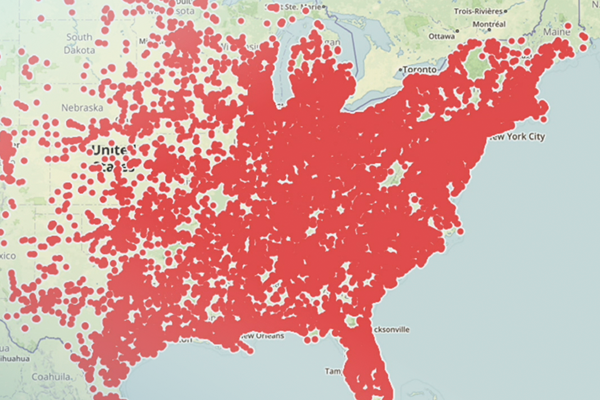Semi-autonomy is coming FAST. It’s creating driver confusion, changing driver behavior, and potentially changing driver risk. This has sparked enormous interest among insurance professionals.
Agero’s team of data scientists have been able to compare the results of Agero’s own MileUp study with other outside research to track driver behavior in semi-autonomous vehicles. We’ve discovered some fascinating insights. I shared the first look at our findings on April 22 at the AIR National Conference. During my presentation, I discussed four key insights that really connected with insurance professionals in the audience and sparked great discussions. Here is a brief overview of these four insights.
#1. Testing Just Technology Doesn’t Cut It
The first insight I revealed was that testing just the technology doesn’t cut it. A lab environment doesn’t provide the context and uses cases for understanding how drivers adapt and react in the real world. The missing key is the human part of the equation. Lab testing alone misses such things as unexpected driver behaviors, customer confusion caused by insufficient education, human reactions to changes in software, phone usage and distracted driving.
I published an article in March on this subject where I discussed the MIT Advanced Vehicle Technology (AVT) Study which tracks driver behavior in semi-autonomous vehicles from companies like Tesla, GM and Volvo. These vehicles are outfitted with sensors, cameras, mobile telematics, and computers to determine driver behavior. This tells us how early adopters are responding to, and actually using, their newly empowered vehicles and how that impacts driver safety and risk.
In my discussions with insurance professionals at the conference, it was clear that they have a pressing need to understand how drivers are actually using this technology to be able to effectively provide ways to measure driver risk and improve safety.
# 2. Broad generalizations are inappropriate
Next, I discussed Agero’s MileUp study that gives us insight into different segments of drivers based on their driving behavior. This study clearly shows that broad generalizations of usage and behavior across a large population are inappropriate.


By analyzing driver behavior and phone usage patterns on a million trips per day, we’ve identified 7 segments of users, each with different demographic bends, technology aptitude and usage patterns, and most importantly, crash risk.


Insurers I spoke with were very engaged to understand how their policyholders might fit into each of these segments. Then, they can adjust their programs to more effectively help these drivers lower their crash risk.
#3. Driver usage of hands-off (L2) automation depends on two key factors
After I shared the testing model and how to dig down to segment drivers, the next important insight was pulled from the MIT Advanced Vehicle Technology (AVT) Study. I shared two key factors that determine how drivers are using the L2 automation technologies.
First, it depends on the quality of how automakers implement their systems. Different systems build different levels of trust. Systems that operate consistently, predictably, and in a way that’s comfortable to the human driver’s expectations result in higher levels of driver trust and more use. The MIT AVT Study shows that differences in system design can result in usage rates that are as much as 4x higher in vehicles with higher quality implementations.
Secondly, I discussed a combination of better UX design and proper education. These are two key components to improving trust and system usage. Drivers need to know how the systems work and what their benefits and limitations are to decrease frustration and confusion.
There were many questions from the audience. One question that stood out was, “What are OEMs doing to help address these issues we’re seeing?”
Another key question insurers asked, which leads me to the last insight was, “Are there ways to prevent phone usage in the car?”
#4. Impact of increasing automation and phone usage
The last major insight I addressed was the impact of increasing automation usage. As automation usage increases, we see phone usage increasing as well. However, this does NOT imply that increasing levels of automation are more dangerous.
It’s possible that higher levels of automation may provide increased safety benefits that more than offset any potential decrease in safety from driver distraction with phone usage. The Advanced Vehicle Technology (AVT) Consortium is continuing its research to find out the answers to questions regarding these increased safety benefits and phone usage.
Summary
In summary, I was engaged in great discussions with insurance professionals attending the AIR conference about the studies we’ve done. There was definitely a new level of excitement in the air around an increasingly autonomous world.
It’s clear from my interactions with these insurers that they need to understand how drivers are actually using this technology to be able to effectively provide ways to improve driver risk and safety. My insights into the testing environment, segmenting drivers, driver usage of the L2 technology, and the impact of increasing automation and phone usage are just the beginning of the results gleaned from the tests and the research between Agero’s MileUp Study, the MIT AVT Study, and research from our AVT Consortium.
There are many more questions that need to be addressed regarding the impact of automation on driver risk and safety. We’ll be publishing a series of whitepapers that go into more depth on the results of our groundbreaking driver behavior study. With over 3B miles of data, thousands of accidents analyzed and detailed demographic data the analytics are just getting started. Stay tuned, much more to come…






 Jeffrey Blecher's talent, enthusiasm, and track record for identifying and evaluating both organic and acquisitive growth opportunities make him a key player in Agero’s growing reputation as an industry leader. He joined us after a decade as a consultant to senior executives from Fortune 500 companies, private equity firms and startups on strategic, operational and technology related issues.
Jeffrey Blecher's talent, enthusiasm, and track record for identifying and evaluating both organic and acquisitive growth opportunities make him a key player in Agero’s growing reputation as an industry leader. He joined us after a decade as a consultant to senior executives from Fortune 500 companies, private equity firms and startups on strategic, operational and technology related issues.